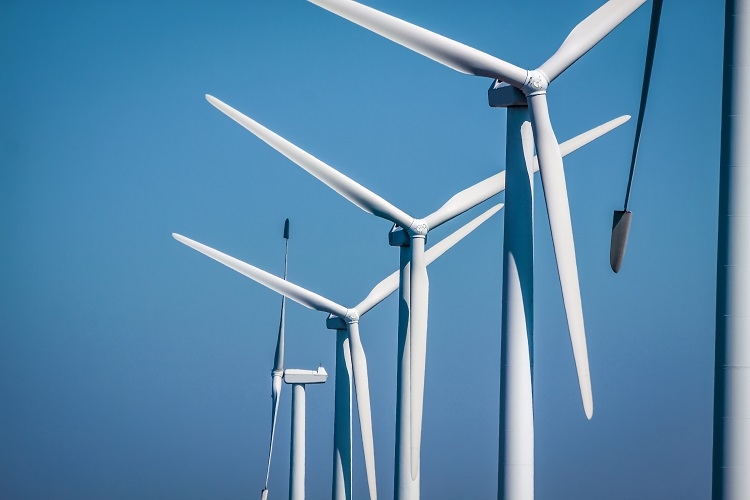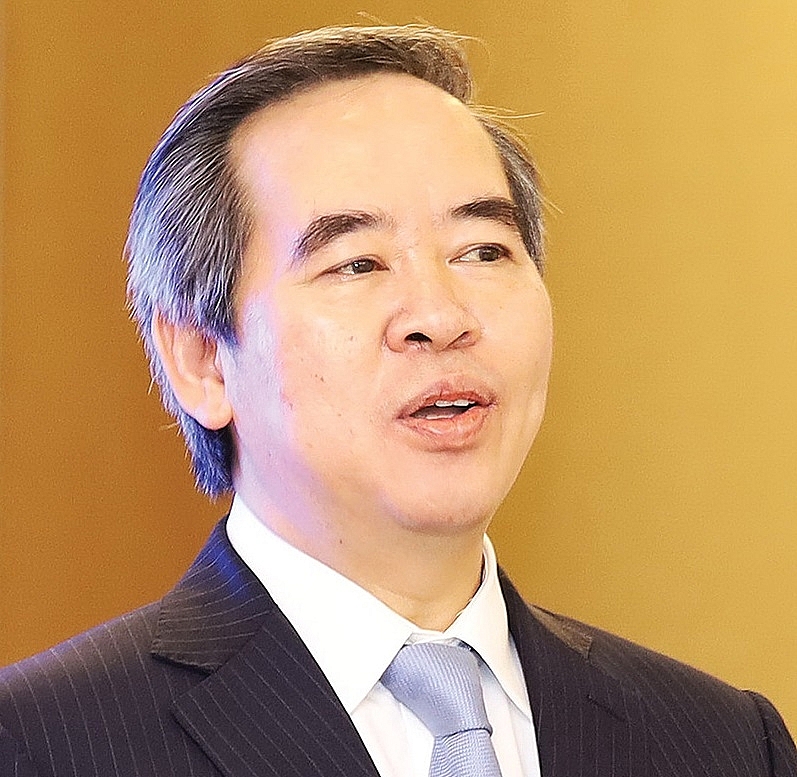Planning for an energy-rich future
 |
| Planning for an energy-rich future, illustration photo/ Shutterstock |
How do you estimate the potential of Vietnam’s renewable energy and what is the proportion of renewable and new energy sources in the future?
Vietnam has good potential for developing renewable energy (RE). As per a study on wind energy potential research conducted by the German International Cooperation Agency in 2017, Vietnam has an onshore wind power potential of about 25-50 gigawatts. The potential for developing wind power in this country is much greater if taking into account offshore areas. In addition, many areas in Vietnam have an average solar potential ranging from 4.5-5.5 kilowatt hours per square metre.
Studies evaluating the potential of renewable energies show that Vietnam could develop about 8,000 megawatts of small hydroelectricity, 20,000MW of wind power, 3,000MW of biomass power, and 35,000MW of solar power by 2030.
The rate and structure of our country’s renewable energy source has been clearly determined. Up to now, the total capacity of renewable energy sources (biomass, wind, and solar power alone) accounts for 10 per cent of the total system capacity. However, electricity output only accounts for about 2 per cent of total electricity production.
Among that, there are nine wind power projects connected to the grid with total capacity of 440MW in operation; 91 large-scale solar power projects with a capacity of about 4,500MW; and about 20,000 rooftop solar power systems with total capacity of about 300MW in operation.
In order to promote maximum exploitation and use of domestic renewable energy sources, the government set targets for RE developments to also gradually increase the proportion of renewable energy in national energy production and consumption towards sustainable development.
The Politburo’s Resolution No.55 NQ/TW dated February 11 on the country’s development strategy for energy over the next 10 years and with a vision towards 2045 sets high priority on fast and sustainable energy development, aiming to increase share of renewable energy sources in total primary energy production to 15-20 per cent by 2030, and 25-30 per cent by 2045.
How is the current status of development and what will the MoIT do to promote private sector development in the power sector?
Encouraging and creating favourable conditions for all economic sectors, especially the private sector, to participate in the development of the energy sector is a huge policy of the Party and the state.
This sector has a significant contribution to make for the power sector. For example, build-operate-transfer projects are large and important ventures that have been invested in by non-state enterprises, contributing to reduce the burden on arranging capital for state-owned enterprises and ensuring power supply for socio-economic development.
In recent years, the development of renewable energy has also grown strongly, attracting large capital sources by the private sector.
In the coming time, the development of RE will grow even stronger. This means that it needs mechanisms and policies to encourage more private investment.
From experience of attracting investment capital from non-state economic sectors, the most important policy is the price signal to attract private funding. When an investor sees a guaranteed price that recovers costs and is profitable, they will invest.
Thus, the tax mechanism and policy to ensure the price signal is also a problem that the MoIT has recently studied and advised the government as well as proposed mechanisms and policies to develop renewable energy sources.
Vietnam has developed renewable energy, mainly solar and wind power, through FiTs and it is suitable for all newly-developed countries, when the renewable energy market still has untapped potential.
Currently, the price of renewable energy and technology changes quickly so the mechanism for fixed prices will only apply in the fixed period. As Vietnam’s RE market has matured, there will be appropriate mechanisms, such as bidding, to ensure competition, transparency, and fairness as well as efficiency for both the government, businesses, and residents.
What are challenges and tasks for Vietnam’s RE development to ensure power security and a green path?
Resolution 55 identified that the Vietnamese energy sector has developed quite strongly recently, but it still pointed out that it faces challenges to ensure energy security. One of the challenges is that Vietnam has become increasingly dependent on imported fuel.
This change is going to impact the security of energy supply but can be reduced through increased energy efficiency and by exploiting domestic sources. Additionally, Vietnam’s industrial infrastructure is still limited.
For example, in the current transmission grid, if we develop stronger renewable energy, it remains to be seen if Vietnam’s electricity transmission system can meet the requirements.
Recognising these challenges, the MoIT has identified and proposed many solutions to ensure energy security and power supply. These solutions focus on ensuring energy projects to meet schedules as planned and supplementing the planning as well as mechanisms and policies to develop renewable energy to reduce dependence on imported fuels and protect the environment.
In parallel with promoting renewable and clean energy sources, the MoIT has also implemented a series of solutions for efficient use of energy and promoting modern and reliable infrastructure for the energy industry.
The overall planning will also include the energy sector, the planning of infrastructure, the national petroleum supply reserve, and the development strategy of Vietnam’s coal industry as it is necessary to amend the laws on electricity and petroleum, develop a law on renewable energy development, and complete the legal framework as well as formulate a planning strategy.
| Nguyen Van Binh - Head, Central Economic Commission
After more than 30 years of innovation and success, we can be confident and assert that the local energy industry has greatly contributed to the nation’s rejuvenation. Vietnam is evolving with qualitative alterations, requiring the energy sector to attain fresh advances. Resolution 55 includes two meaningful points. The first is to assure firm national energy safety – the premise and the motivation of social-economic development. Giving priority to sustainably developing the energy sector plays an important role during the acceleration of industrialising and modernising Vietnam. The second is that flourishing national energy has to be in line with the institution of the market economy and the socialist direction and international integration trend. Moreover, it is necessary to quickly build up the energy market under the guidance of synchronous, competitive, and transparent methods through ownership and business. Furthermore, applying the market price to all types of energy is also important. The resolution encourages facilitation of various economic sectors, especially the private one, joining energy growth and also eliminating signs of subsidisation, monopoly, unequal competition, and lack of transparency in the sector. Federico Bestiani - Director, BEC Ltd.
The greatest suggestion to the government that our company would give is to start now to prepare the next regulation and issue it before the current one expires. I personally witnessed 10 years ago many countries in Europe experience the solar feed-in tariff (FiT) with different policies and results. The countries that had a long-term vision and regulations were gifted with sustainable development of solar and grew a strong and skilfully-local industry. But other countries had countless and short-term FiT policies that destabilised the industry and privileged only short-term investors and speculators with, of course, a negative impact on the local industry. As a European company, we will continue to provide our suggestions through EuroCham and the Green Growth Sector Committee that is making great efforts to advocate the voices of the business in this industry. Liming Qiao - Asia director, Global Wind Energy Council
In Vietnam, we have been thrilled to see non-stop good news for the industry over the past few weeks: the additional seven gigawatts of projects being approved by the government in the Power Development Plan VII; the passing of the direct power purchase agreement rules; and the ongoing process for the FiT post-2021. Despite the industry’s anxiety, with the clock ticking and the window for projects qualifying for the current FiT closing, we do see that the government’s confidence in renewables and wind in this country is stronger than ever. The industry has a big stake and concerns over the FiT2 process, which we are actively engaged in to ensure the industry’s voice is heard clearly to secure sustainability of the wind industry over the next two years. Every time there is a major policy shift, such as at FiT level, it is a nerve-racking process. If done well, a suitable new tariff level can stimulate technology progression and achieve cost reduction effectively. If it is not done well, it can hinder the nascent industry and create a boom-bust cycle which won’t benefit either the national government or the industry. While we are still fighting and hoping for the best for the industry, the FiT changes have given the industry an opportunity to further prove itself on cost competitiveness. Khun Somruedee - Chaimongkol CEO, Banpu Group
As energy sustainability is the key, Banpu Group has prudently considered investment opportunities with the balanced energy proportion in our portfolio across Asia-Pacific. As for Vietnam, Banpu hopes to be a unit fulfilling the government’s renewable targets. Being committed to conducting our business professionally and ethically, we embrace environmental, social, and governance principles. Currently, we are focusing on the wind power plant project to achieve the targeted commercial operation date, and in the long term we will contribute to the energy market growth in Vietnam in response to the government policies. Moreover, stakeholder relationship management and community development are our priorities to ensure that our investment and businesses follow the sustainable development policy. |
What the stars mean:
★ Poor ★ ★ Promising ★★★ Good ★★★★ Very good ★★★★★ Exceptional
 Tag:
Tag:
Themes: Towards Sustainability
Related Contents
Latest News
More News
- Vietnam’s green transition demands collective financial action (December 15, 2025 | 12:00)
- VIR workshop highlights capital and policy for sustainable development (December 15, 2025 | 11:00)
- National Assembly approves pilot mechanisms to accelerate major projects in Hanoi (December 12, 2025 | 11:29)
- Vietnam eases policy approval requirements, simplifies foreign and outbound investments (December 11, 2025 | 17:53)
- Unpacking new momentum in Vietnam’s M&A market (December 10, 2025 | 09:59)
- Forum honours outstanding M&A deals, strategies, and advisory firms (December 09, 2025 | 18:22)
- Vietnam enters defining phase of M&A growth (December 09, 2025 | 17:00)
- Vietnam’s M&A market opens new opportunities amid strong economic momentum (December 09, 2025 | 15:00)
- Vietnam M&A Forum 2025: new position, new momentum (December 09, 2025 | 14:30)
- FDI in Vietnam jumps on additional capital and share purchases (December 09, 2025 | 13:56)




























 Mobile Version
Mobile Version